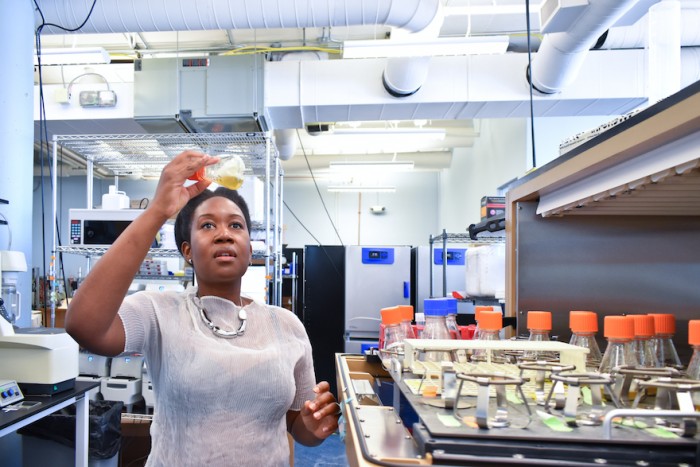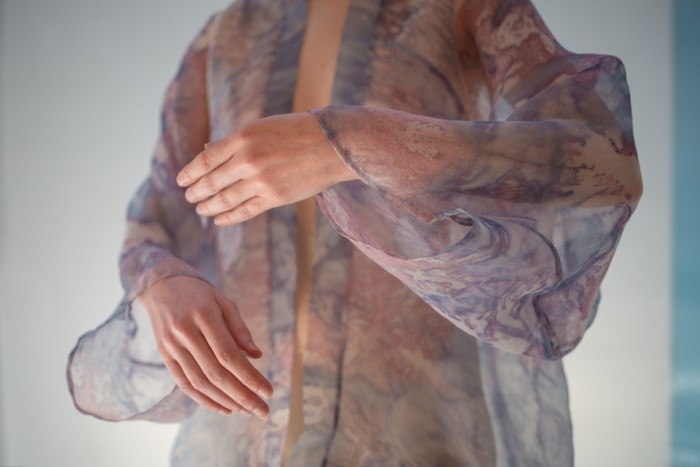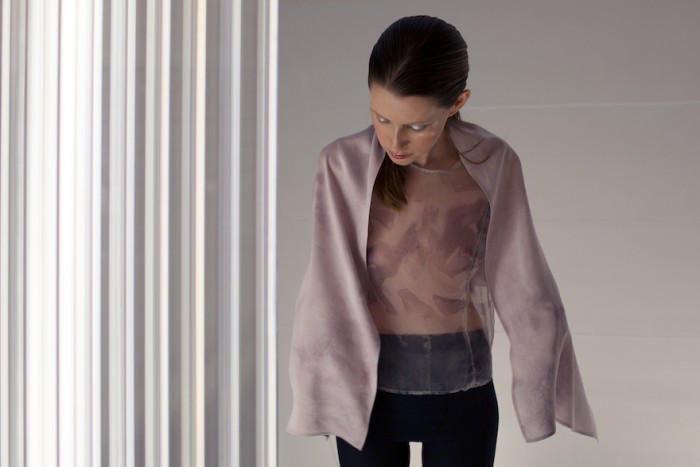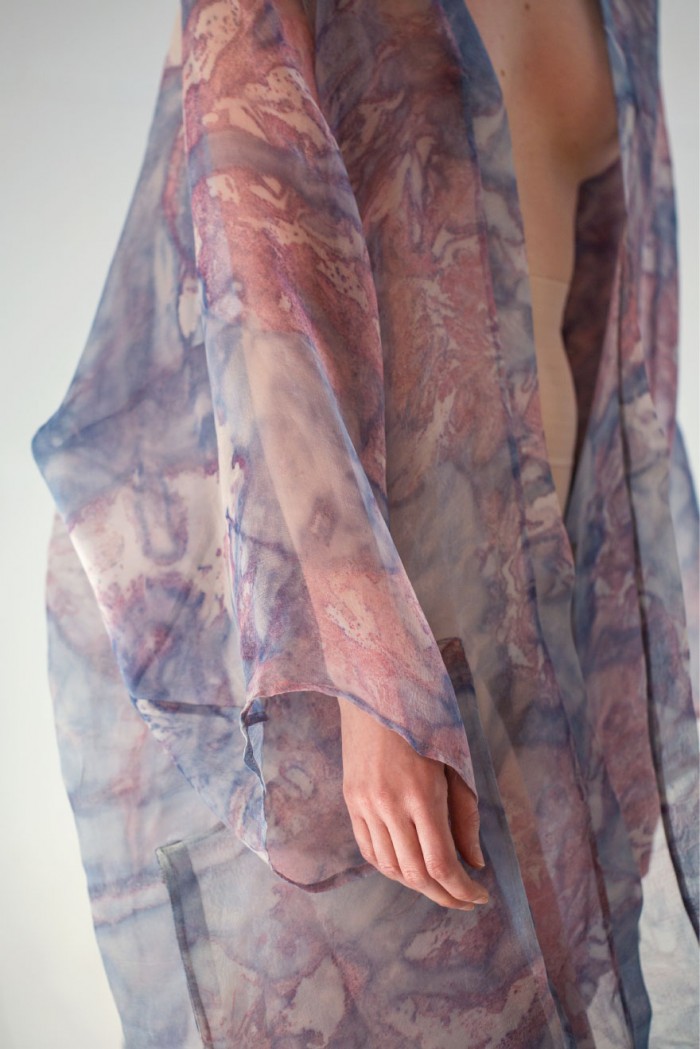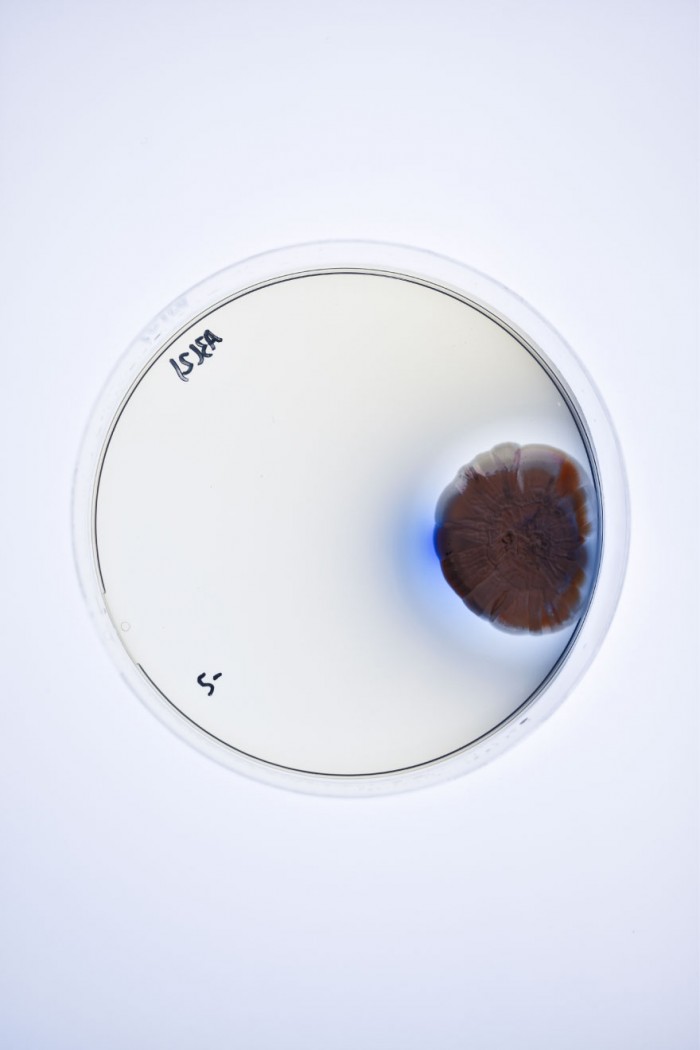Other than housing, transport and food production; the clothing industry is one of the most harmful to our planet.
This is not limited to waste in the form of discarded clothing, but also in how the majority of our clothes are produced in India and China, places that rely heavily on coal-fired power plants.
Added to this, the production of clothes involves the use of toxic chemicals and lots of water. It’s clear that fashion has a waste problem.
Natsai Audrey Chieza is looking at how biology can help us out of this predicament. For the past six years, the Zimbabwean-born design researcher has been working with a bacteria called streptomyces coelicolor.
The bacteria lives in soil where it helps to decompose organic matter. It also produces an antibiotic called actinorhodin, which ranges in colour from blue, pink and purple, depending on the acidity of its environment.
Through a project called Project Coelicolor, Chieza was able to develop a system of design-led microbiology protocols to dye silk scarves into different patterns and colours using this bacteria.
On the day of our interview, which happens over Whatsapp call due to technical issues on my part, she tells me of the success of these protocols. The significant reduction in water use and doing away with harmful chemicals, coupled with the positive reaction to the work, opened up new avenues for her to think about the clothing industry in a post fossil fuel world.
Chieza, who left Zimbabwe as a teenager, is now based in London. She is the founder and director of Faber Futures, a biodesign lab and creative research agency that taps into the intelligence of nature to develop new materials, as well as methods of making. Faber Futures exists to discover, explore and develop methods of working with bacteria, fungi and algae to grow sustainable materials, products and services.
I ask about her younger years and where her interest in fashion began and she says she remembers watching MTV, and being influenced by the avant-garde videos on MTV Europe as well as artists like Bjork, TLC and Mafikizolo.
Of the latter she says: “It was never just about music, but how you tell a story visually and musically.”
As someone who reads and understands the world through visual terms, Chieza counts Solange as another artist whom she’s been following since the early days of her career.
On the way Solange engages with artistic practice working across different mediums and how she’s been building up to this moment, she says: "Solange brings a critical artistry to the music industry. I’ve enjoyed watching her talent manifest.”
Chieza's interest in bio-design came after first studying architecture at Edinburgh University before moving on to doing a course on material futures at Central Saint Martins.
“Two weeks into the course I realised though I had come to Central Saint Martins hoping to build a career in the fashion industry, it was no longer my priority. Instead I discovered other ways to think about design, technology and how through the emerging field of synthetic biology, designers would have to start approaching their practice from a molecular scale. But I also wanted to get my hands dirty. The only way to find out was to immerse myself and build things from living things.”
Building things has kept her very busy with residencies stretching from Sweden to Boston.
In Boston, she worked at Ginkgo Bioworks. First as part of a pilot residency programme before collaborating with Ginkgo to develop their Ginkgo Creative Residency three-month programme for people working at the intersection of synthetic biology and their creative discipline.
“We want to use design as a speculative tool that asks 'what if?' This is the basis for then building the frameworks, methods, and tools of making with life.”
During a TED Institute Talk she delivered at BCG @ TED in Milan, Chieza explained that although the field of synthetic biology is still developing, she was not alone.
“MycoWorks is a startup that wants to replace animal leather with mushroom leather, a versatile, high-performance material that has applications beyond textiles and into product and architecture. And Bolt Threads - they've engineered a yeast to produce spider-silk protein that can be spun into a highly programmable yarn. So think water resistance, stretchability and super strength.”
Chieza says she is currently working with two brands (one luxury boutique brand and a sports apparel brand) to test the commercial impact of producing at scale.
When I ask what keeps her motivated especially as it sometimes feels like the fight for a better planet is a losing battle, she responds: “I am terribly optimistic. It’s why I am doing all this work and asking all these questions. These are pertinent issues that we can collectively address with a mission-driven attitude that integrates a variety of disciplinary expertise with a mindset that anything is possible.”
More on fashion and biology:
What is the alternative role of the fashion designer in the age of biotechnology?

